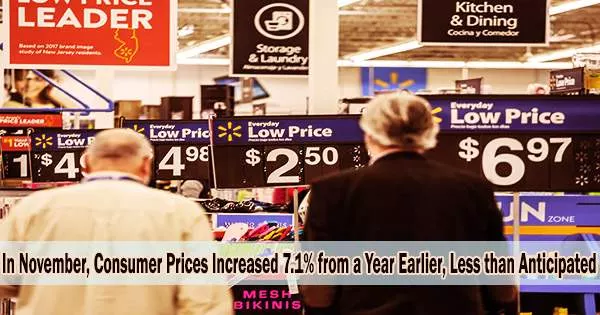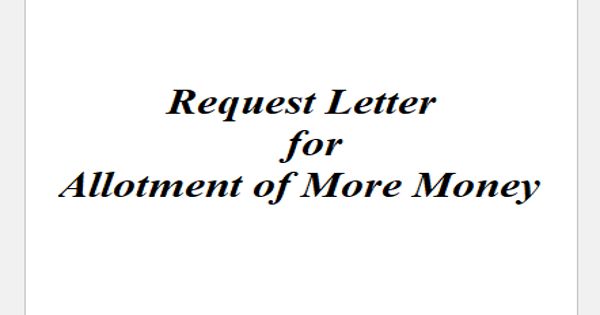In November (2022), prices rose less than anticipated, which is the most recent indication that the economy’s long-running inflationary crisis is starting to ease.
According to data released by the Labor Department on Tuesday (December 13, 2022), the consumer price index, which monitors a broad range of goods and services, gained barely 0.1% from the previous month and 7.1% from a year ago. According to a Dow Jones survey of economists, both a monthly gain of 0.3% and a 12-month rate of 7.3% were anticipated.
The increase from a year ago, while well above the Federal Reserve’s 2% target for a healthy inflation level, was tied for the lowest since November 2021.
Excluding volatile food and energy prices, so-called core CPI rose 0.2% on the month and 6% on an annual basis, compared with respective estimates of 0.3% and 6.1%.
Following the release of the news, stocks immediately surged higher. Futures linked to the Dow Jones Industrial Average originally rose by more than 800 points before somewhat moderating. The surge, however, lost a lot of its momentum throughout the session, and by 2:30 p.m. ET, the Dow had only gained about 50 points.
“Cooling inflation will boost the markets and take pressure off the Fed for raising rates, but most importantly this spells real relief starting for Americans whose finances have been punished by higher prices,” said Robert Frick, corporate economist with Navy Federal Credit Union. “This is especially true for lower-income Americans who are disproportionately hurt by inflation.”
Falling energy prices helped keep inflation at bay. The energy index declined 1.6% for the month, due in part to a 2% decrease in gasoline. Food prices, however, rose 0.5% and were up 10.6% from a year ago. Even with its monthly decline, the energy index was higher by 13.1% from November 2021.
Cooling inflation will boost the markets and take pressure off the Fed for raising rates, but most importantly this spells real relief starting for Americans whose finances have been punished by higher prices. This is especially true for lower-income Americans who are disproportionately hurt by inflation.
Robert Frick
Shelter costs, which make up about one-third of CPI weighting, continued to escalate, rising 0.6% on the month and now up 7.1% on an annual basis.
After months of witnessing wage increases fall far short of inflation, the easing of inflation pressures helped raise workers’ spirits. Although they were still down 1.9% from a year ago, real average hourly earnings increased by 0.5% for the month.
The CPI report comes the same day the rate-setting Federal Open Market Committee begins its two-day meeting. Markets widely expect the FOMC on Wednesday to announce a 0.5 percentage point rate increase, regardless of Tuesday’s CPI reading.
“The Fed could dismiss the better-than-expected October as just one month’s data, but the further slowdown in November makes this new disinflationary trend harder to dismiss,” Paul Ashworth, chief North America economist for Capital Economics, wrote in a post-CPI note titled, “Stick a fork in it, inflation is done.”
Inflation spiked in spring 2021, the result of converging factors that took price increases to their highest levels since the stagflation days of the early 1980s. The pandemic-induced imbalance in supply and demand, Russia’s invasion of Ukraine and its effects on energy prices, and the trillions of dollars in fiscal and monetary stimulus that sent an abundance of money chasing too few goods that were hampered by supply chain issues were among the main aggravating factors.
Used vehicle prices, which had been a major contributor to the initial inflation burst, fell 2.9% for the month and are now down 3.3% from a year ago. The Used Cars and Trucks Index was up more than 40% on an annual basis as recently as February as a result of increased demand as a lack of microchips caused a backlog in new car manufacture.
Medical care services costs also declined 0.7% on a monthly basis and were up 4.4% annually.
Headline CPI peaked around 9% in June 2022 and has been on a slow but steady decline since.
After spending months dismissing the inflation surge as “transitory,” Federal Reserve officials began raising interest rates in March. The central bank has boosted its short-term borrowing rate six times in all, pushing the benchmark up to a targeted range of 3.75%-4%.
Fed Chairman Jerome Powell said recently that an important component in determining future monetary policy moves will be looking at services inflation excluding shelter costs. That gauge was little changed in November but is up nearly 7.3% from a year ago.
















